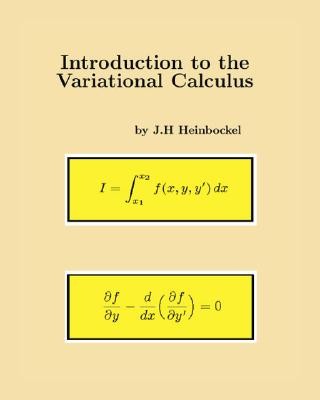
- We will send in 10–14 business days.
- Author: J H Heinbockel
- Publisher: Trafford Publishing
- ISBN-10: 1425103529
- ISBN-13: 9781425103521
- Format: 21 x 27.9 x 1.9 cm, minkšti viršeliai
- Language: English
- SAVE -10% with code: EXTRA
Reviews
Description
Introduction to the Variational Calculus is an introduction to the various mathematical methods needed for determining maximum and/or minimum values associated with functions and functionals. The material presented is suitable for a one semester course in the subject area called calculus of variations. It is written for mathematicians, engineers, physicists, chemistry and science majors and is suitable for upper level college undergraduates or beginning graduate students. It can be used as a reference book for various calculus of variation topics.Chapter one reviews necessary background material from the subject area of calculus and advanced calculus. Chapter two reviews maximum and minimum values associated with functions and functions subject to constraint conditions. Chapter three introduces techniques for finding extreme values associated with functionals. The Euler-Lagrange equations are developed for a variety of functionals. The fourth chapter develops some of the more detailed concepts associated with the subject area of calculus of variations. The fifth and sixth chapters consider various applied engineering applications of the calculus of variations. Selected applied topics are developed together with necessary solution methods.
There are three Appendices. The Appendix A contains units of measurements from the Systeme International Unites along with some selected physical constants. The Appendix B contains gives the representation of the gradient, divergence and curl in Cartesian, cylindrical and spherical coordinates. The Appendix C contains solutions to selected exercises. The book is 356 pages with numerous exercises and applications presented at the end of each chapter.
For additional information and downloads please visit the web site www.math.odu.edu/ jhh/counter7.html
EXTRA 10 % discount with code: EXTRA
The promotion ends in 23d.22:41:40
The discount code is valid when purchasing from 10 €. Discounts do not stack.
- Author: J H Heinbockel
- Publisher: Trafford Publishing
- ISBN-10: 1425103529
- ISBN-13: 9781425103521
- Format: 21 x 27.9 x 1.9 cm, minkšti viršeliai
- Language: English English
Chapter one reviews necessary background material from the subject area of calculus and advanced calculus. Chapter two reviews maximum and minimum values associated with functions and functions subject to constraint conditions. Chapter three introduces techniques for finding extreme values associated with functionals. The Euler-Lagrange equations are developed for a variety of functionals. The fourth chapter develops some of the more detailed concepts associated with the subject area of calculus of variations. The fifth and sixth chapters consider various applied engineering applications of the calculus of variations. Selected applied topics are developed together with necessary solution methods.
There are three Appendices. The Appendix A contains units of measurements from the Systeme International Unites along with some selected physical constants. The Appendix B contains gives the representation of the gradient, divergence and curl in Cartesian, cylindrical and spherical coordinates. The Appendix C contains solutions to selected exercises. The book is 356 pages with numerous exercises and applications presented at the end of each chapter.
For additional information and downloads please visit the web site www.math.odu.edu/ jhh/counter7.html


Reviews